Class Notes – Fall 2022
News, notes and updates from UNM Alumni...
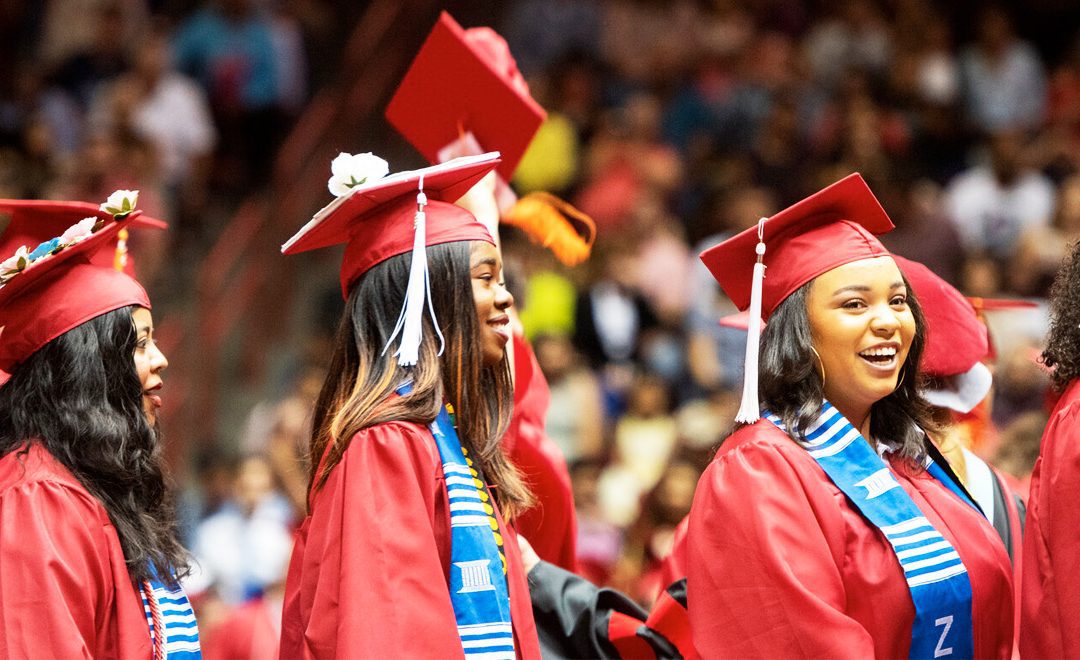

The University of New Mexico Alumni Association
MSC 01-1160, 1 University of New Mexico
Albuquerque, NM, 87131-0001
Deadlines:
Spring deadline: January 1
Fall deadline: June 1
Robert “Bob” Cardenas (’55 BS) died in San Diego at the age of 102. Cardenas, a retired Air Force brigadier general, was an experimental test pilot and was awarded the Air Medal with two oak leaf clusters for experimental flight tests at Edwards AFB. His most notable achievement was piloting the B-29 launch aircraft that released the X-1 experimental rocket plane in which then Capt. Charles “Chuck” Yeager became the first human to fly faster than the speed of sound in 1947.
Jack Bresenham (’59 BSEE) Washington, D.C., was honored in the Institute of Electrical and Electronics Engineers Computer Society’s inaugural 2021 Class of Distinguished Contributors, which recognizes members for their technical contributions to the Computer Society and their profession at large.
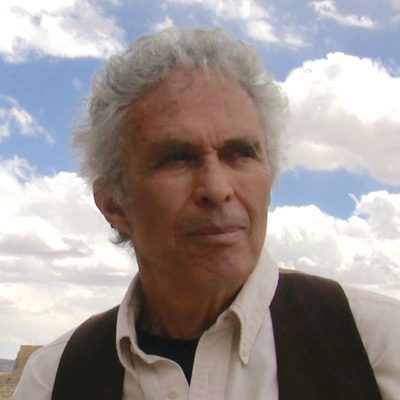
Nasario Garcia
Ronald Kaehr (’70 BSME), Albuquerque, a father and grandfather, has completed his new book “Rogue Justice: Retribution.”
Bob White (’70 BA) Albuquerque, was named associate chief administrative officer for the City of Albuquerque. White has more than 40 years of experience as an attorney and public servant, formerly serving as assistant city attorney and city attorney.
Douglas J. Crandall (’71 BUS) was elected to a second term as president of the board of the New Mexico Retiree Health Care Authority, which administers insurance plans for more than 90,000 municipal, county, state and educational retirees and their families.
Raul R. Mena (’71 BS, ’75 MD), the medical director of the Roy and Patricia Disney Family Cancer Center, retired after four decades of caring for cancer patients at Providence Saint Joseph Medical Center in Burbank, Calif.
Grace B. Duran (’77 JD), Las Cruces, N.M., a judge in the Third Judicial District in Las Cruces, was appointed to the New Mexico Children’s Trust Fund Board of Trustees.
Anna L. Pool (’79 BA) has returned to Albuquerque after retiring from the University of Washington. She is currently editing another
memoir and researching her family history.
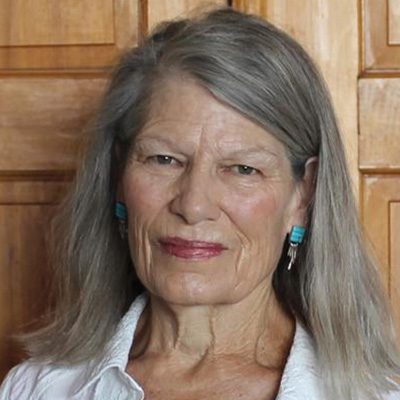
Shelly Armitage

Jack J. Dongarra

Bob Matteucci, Jr.
Shelley Armitage (’83 PhD), Las Cruces, N.M., was inducted into the Texas Institute of Letters. Armitage is a professor emerita at the University of Texas at El Paso.
Jack J. Dongarra (’81 PhD) Knoxville, Tenn., received the 2021 ACM A.M. Turing Award from the Association for Computing Machinery for his pioneering contributions to numerical algorithms and libraries.
Bob Matteucci, Jr. (’82 BAS, ’08 JD) has been elected to serve on the New Mexico Bar Association Family Law Section Board of Directors.
Walter R. Archuleta (’81 MA, ’02 PhD), Santa Fe, N.M., was the recipient of the Matías L. Chacón Lifetime Achievement Award for contributions to bilingual education. The award was presented by the New Mexico Association for Bilingual Education at their annual conference.
James H. Hinton (’81 BA), Dallas, retired from his position as CEO of Baylor Scott & White Health, and has been named operating partner of the equity firm Welsh, Carson, Anderson & Stowe.
Mike Hamman (’83 BSCE), was named New Mexico state engineer. Hamman was formerly the CEO and chief engineer for the Middle Rio Grande Conservancy District, the Bureau of Reclamation area manager and the City of Santa Fe’s water resources director.
Dianne R. Layden (’83 PhD), Albuquerque, was selected to portray the late Supreme Court Justice Ruth Bader Ginsburg in the New Mexico Humanities Council’s Chautauqua program.
Martin Red Bear (’83 MA) is celebrating Native American culture and honoring military service members with a new piece of art that will be displayed in The Journey Museum & Learning Center in Rapid City, S.D. Red Bear was commissioned to adorn the outside of a tipi, choosing to paint 41 horses and warriors.
Edward Argueta (’85 BSCE) was honored by the Department of Defense with the Bronze de Fleury Medal for his exceptional service to U.S. Army Corps of Engineers, the U.S. Army, the Department of Defense and the nation during a career that spanned more than 35 years.
Gregor von Huene (’85 BSME) is chief engineer at Soleeva Energy Inc. in San José, Calif., where he is developing a hybrid solar photovoltaic panel that provides both hot water and electricity. The panel will increase the overall energy gain from the same roof space and will be manufactured in the U.S. for use in residential and commercial applications.
Russell “Rusty” Greaves (’87 MA, ’97 PhD) has been appointed director of the Office of Contract Archeology, a division of UNM’s Maxwell Museum of Anthropology.
Sheila Hernandez (’87 BBA, ’89 MBA) has been named senior vice president at Summit Electric Supply in Albuquerque with the title “customer experience officer.”
Harvey Krauss (’87 MAPA) was named the director of economic development and senior planner for the town of Florence, Ariz.
Mike D. Petraglia (’87 PhD), Brisbane, Australia, has been named director of the Australian Research Centre for Human Evolution at Griffith University.
JoLou Trujillo-Ottino (’87 BA) has joined Delta Dental of Arizona’s leadership team as its senior vice president of sales and business development.
UNM alumni Craig Webb (’87 BFA), Rudolfo Carrillo (’87 BFA), Judson Frondorf (’80 BFA, ’87 MA) and Angie Garberina (’88 BFA) were featured in “Saw. Conquered. Came.” at Six O Six gallery in Albuquerque.
Jim R. Keene (’88 BM), Atlanta, Ga., conducted The United States Army Field Band on the recording Soundtrack of the American Soldier, which won the Grammy Award for Best Immersive Audio Album.
Dave A. Sanchez (’88 BA), Washington, D.C., has been appointed director of the Office of Municipal Securities at the Securities and Exchange Commission. He was an attorney fellow at the SEC from 2010 to 2013 and was most recently senior counsel at Norton Rose Fulbright.

Cindy Lovato-Farmer
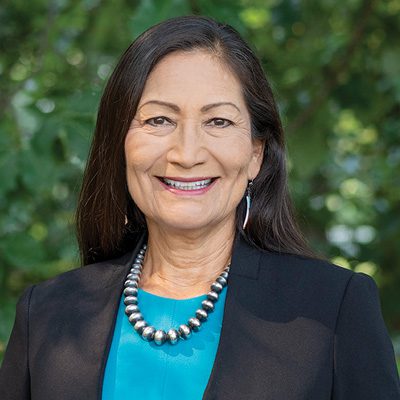
Deb Haaland
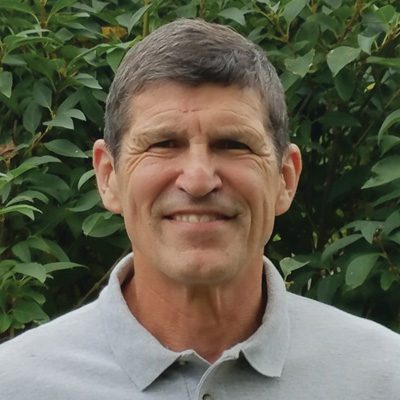
Tom Ducatte
Cindy Lovato-Farmer (’93 JD), a specialist in employment law with two decades of experience in legal and leadership positions at national laboratories, has been named general counsel at Pacific Northwest National Laboratory.
Deb Haaland (’94 BA, ’06 JD), the U.S. Secretary of the Interior, spoke at the 2021 United Nations Climate Change Conference in Glasgow, Scotland.
Tom Ducatte (’98 EDSPC) is a sportswriter for North Country Living Magazine, a quarterly publication located in the Adirondacks region of upstate New York.
Bryan Biedscheid (’90 BA, ’96 JD) is chief judge of the First Judicial District, which encompasses Santa Fe, Los Alamos and Rio Arriba counties.
Carol C. Sánchez (’90 BFA), Orlando Leyba (’82 BFA), and Leigh Anne Langwell (’88 BFA, ’98 MFA) are included in a new exhibition at South Broadway Cultural Center showcasing the work of six artists reflecting on their experiences of the pandemic.
William V. McPherson (’90 BA), Henderson, Texas, who retired from the Houston Police Department in 2020, is Kilgore College’s police chief and director of public safety.
Julie Coonrod (’91 MS), dean of Graduate Studies at UNM and professor of Civil, Environmental, and Construction Engineering, has been named by The American Council on Education as a Fellow for the 2022-2023 academic year.
Garrett Young (’92 BUS) was promoted in December 2022 to partner and general manager at Microsoft corporate headquarters in Redmond, Wash.
LeManuel Lee Bitsoi (’93 AALA, ’95 BS), Cambridge, Mass., is vice president for Diversity, Equity, and Inclusion at Brandeis University.
Matthew T. Casados (’94 BSED), Santa Cruz,N.M., is the Rio Arriba County deputy manager.
Rhonda BeLue (’94 BS) joined The University of Texas at San Antonio as a Lutcher Brown Endowed Distinguished Professor in the Department of Public Health.
Savannah C. Partridge (’94 BSEE), Seattle, Wash., was chosen as the 2022 Honorary Fellow by the Society of Breast Imaging in recognition of her scientific contributions for advancing breast imaging techniques.
Elizabeth A. Garcia (’95 BA) has assumed the duties of chief clerk of the New Mexico Supreme Court.
Tieraona Low Dog (’96 MD), Austin, Texas, has been elected to the American Botanical Council’s Board of Trustees.
Maria E. Sanchez-Tucker (’96 BA), Santa Fe, N.M., has been named community services director for the City of Santa Fe’s Community Health and Safety Department.
Benjamin A. Baker (’97 BA) has been appointed interim director of the New Mexico Law Enforcement Academy, and serves as the deputy cabinet secretary for statewide law enforcement support at the Department of Public Safety.
Olivia Benally (’97 BSEE) Window Rock, Ariz., is the new chief executive officer of the Navajo Times Publishing Company Inc. and publisher of the Navajo Times newspaper.
She is the first Diné woman to serve as leader of the Navajo Times.
Rachel Hess (’97 MD), physician and scientist, was named associate vice president for research at University of Utah Health.
Maria De Varenne (’98 BA), Nashville, Tenn., has been named senior partner at FINN Partners, a leading global public relations agency. Varenne, a veteran news executive and former Tennessean editor, will be responsible for overseeing earned media strategy and content across print and digital channels for the company’s diverse clients throughout the Southeast.
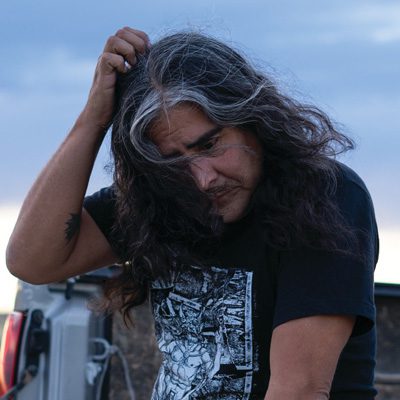
Raven Chacon
Raven Chacon (’01 BA), Albuquerque, N.M., won the 2022 Pulitzer Prize in Music for his piece Voiceless Mass for the pipe organ. Chacon is the first Indigenous composer and first from New Mexico to win the prize.
Cynthia Chavez Lamar (’01 PhD), Alexandria, Va., has been named director of the Smithsonian Institution’s National Museum of the American Indian.
Lauren Keefe (’01 JD) is the new city attorney for the City of Albuquerque.
Donna Mowrer (’01 JD), is the new chief judge of the Ninth Judicial District, which includes Curry and Roosevelt Counties.
Camille Pedrick (’01 BA, ’05 JD), Albuquerque, is the new executive director of The New Mexico Board of Bar Examiners.
Benjamin Petre (’01 BA) Denver, Colo., joined the international law firm Dorsey & Whitney LLP as a partner in its Denver office.
Dylan Miner (’03 MA, ’07 PhD), a founding professor in the Residential College in the Arts and Humanities at Michigan State University, has been appointed dean of the College.
John W. Blair (’04 JD), Santa Fe, N.M., is the new manager of the City of Santa Fe.
Ganesh Balakrishnan (’06 PhD), Albuquerque, was appointed director of The New Mexico Established Program to Stimulate Competitive Research, which works toward building the state’s capacity to conduct scientific research.
Kathy Dong (’06 PHARMD, ’06 MBA) joined the early-stage biotechnology firm Neuron23’s board of directors.
Eric J. García (’06 BFA) Roswell, N.M., presented his exhibit “Space Invader” at the Roswell Museum. The Roswell artist-in-residence’s work shines a light on the dark past of the Americas, and the reality of an authentic “alien” invasion of frightening proportions when Indigenous people clashed with “aliens” from the European continent.
Luis Brown (’07 BBA, ’09 MBA) has been hired as the information technology director by the Village of Los Lunas.
Leah Chelist (’07 BUS) is the new Executive Vice President for People at Denver-based NexCore Group, a national health care real estate developer.
Marcos Gonzales (’07 MBA) was recently promoted to director of the Bernalillo County Economic Development Department.
Shammara Henderson (’07 JD), Albuquerque, a New Mexico Court of Appeals judge, was honored with the Albuquerque Section of the National Council of Negro Women’s Dr. Mary McLeod Bethune Legacy Award. The award acknowledges work with the National Council of Negro Women and the Black community in New Mexico.
Jason R. Patton (’07 BSNE), Gales Ferry, Conn., a U.S. Navy commander, is executive officer of the NAVSEA Warfare Center’s Naval Undersea Warfare Center Division Newport in Rhode Island.
Rebecca Chavez (’08 BA), an MD, completed the surgical critical care fellowship program at Westchester Medical Center in Valhalla, N.Y., a hospital affiliated with New York Medical College School of Medicine.
Shanna M. Combs (’08 MD), Fort Worth, Texas, a practicing physician with the Cook Children’s Physician Network, has been named president of the Tarrant County Medical Society.
Emma Nolan (’08 MWR) is the new principal managing broker for Coldwell Banker Bain’s Edmonds/Lynnwood office located in Seattle, Wash.
Myrriah Tomar (’08 BS) received the 2022 Women in Technology Award from the New Mexico Technology Council. Tomar is the executive director of New Mexico Tech’s Office of Innovation Commercialization and serves as a member of President Stephen G. Wells’ senior staff and cabinet.
Melanie Barnes (’09 PhD) was named state director for the Bureau of Land Management, and will oversee 800 employees, 13.5 million acres of public lands and 42 million acres of federal minerals.
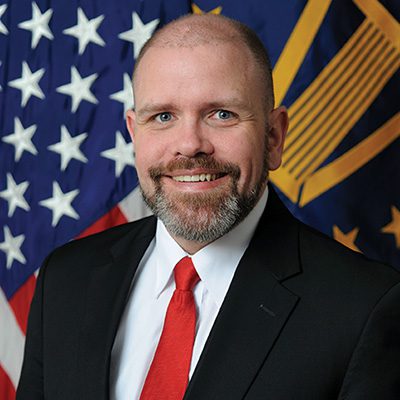
Tim Hoyt
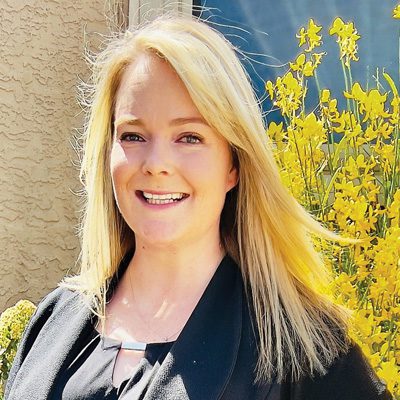
Ashleigh E. Olguin
Tim Hoyt (’10 PHD) serves as the deputy director for Force Resiliency in the Office of the Under Secretary of Defense for Personnel & Readiness. He oversees military-wide policy and programs related to suicide prevention, sexual assault prevention and reducing illicit drug use.
Ashleigh E. Olguin (’15 BA), Albuquerque, was promoted director of contract administration at Friday Health Plans.
Ruben Olguin (’10 BA, ’15 MFA) focuses on acoustics and incorporates sound frequencies in his series “Anthropogenic frequency,” part of the Arrivals 2022 exhibition at form & concept gallery in Santa Fe. Olguin’s series consists of vessels 3D-printed in plant-based plastic filaments infused with wood, which hold specific frequencies isolated to the optimal sound to stimulate the growth of specific plants, such as basil, corn, tomato and mung bean.
Yagazie Emezi (’11 BA), Lagos, Nigeria, an artist and independent photojournalist, has had work published by Al-Jazeera, The New York Times, Vogue, Newsweek, The Guardian and The Washington Post. Emezi was awarded the 2018 inaugural Creative Bursary Award from Getty Images, 2018 U.S Consulate Grant from The United States Consulate General Lagos, Nigeria, and 2017 Distinguished Alumnus Award from The University of New Mexico African Studies Department. Three years ago, she made history by becoming the first black African woman to photograph for National Geographic Magazine.
Ernest I. Herrera (’12 JD), San Antonio, Texas, was named by the Mexican American Legal Defense and Educational Fund as its Western Regional Counsel.
Eric J. Stephen (’12 MA), Tulsa, Okla., is an education and development specialist at Manhattan Construction Company, a national construction services firm.
Alex M. Greenberg (’14 BA, ’17 MBA), Albuquerque, is director of the New Mexico Economic Development Department’s Office of Science and Technology.
Jessica Leigh Streeter (’14 JD), Las Cruces, N.M., has been appointed to the Third Judicial District Court.
Fabianna Tabeling (’14 MACCT, ’19 MBA) has been named interim director of Popejoy Hall at UNM.
Matthew L. Bernabe (’15 BBA), Albuquerque, owner of Urban Hot Dog Company, was featured on the Cooking Channel’s show “Food Paradise.”
Eric G. Griego (’17 MA, ’21 PhD), Albuquerque, will serve as the City of Albuquerque’s director of outreach and advocacy, which seeks to engage the community in the policy-making process.

Alexandra Iturralde
Alexandra Iturralde (’20 BA) is a first-year graduate student at Duke University’s Nicklas School of the Environment.
Layla S. Archuletta (’20 MPA), Santa Fe, N.M., former staffer for U.S. Sen. Martin Heinrich, is the City of Santa Fe’s deputy city manager.
News, notes and updates from UNM Alumni...
UNM grad helps spark electric vehicle revolution…
Read MoreOpera singer pivots to performance coaching…
Read MoreAlumnus caps computing career with prestigious prize…
Read MoreAlumna heads up museum devoted to the American Indian experience…
Read MoreAlumni board president keeps UNM ties tight…
Read MoreAlumni take home a Grammy and a Pulitzer for music…
Read More
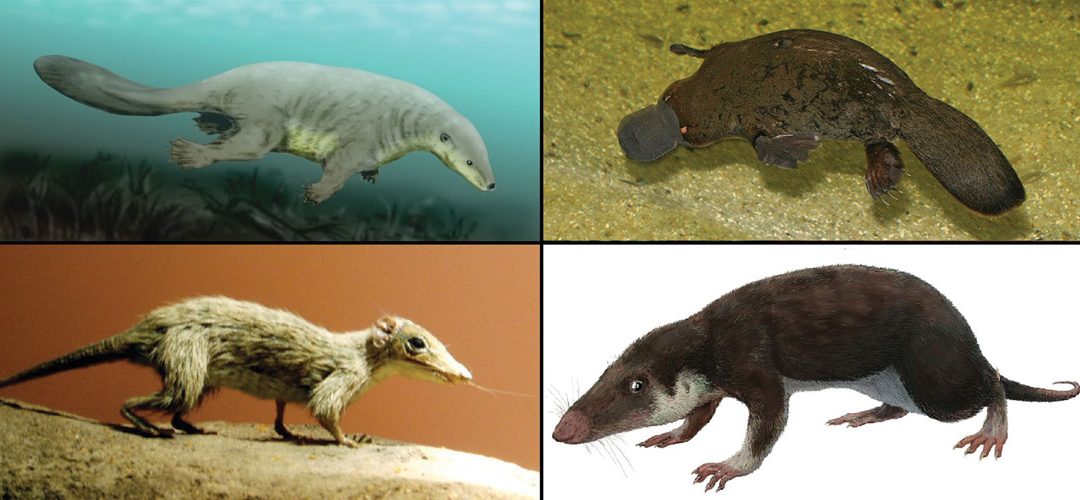

Mammals have the largest brains in relation to body size among vertebrates, but which came first? New research that examined the assumption that enlarging brains led to larger body sizes in mammalian evolution found instead that body size was the first to increase, followed by bigger brains.
UNM Biology Prof. Felisa Smith, an expert on body size evolution and president-elect of the American Society of Mammalogists, was asked by the prestigious journal Science to interpret the new findings, which looked at the explosion of mammalian diversification after dinosaurs went extinct.
“But did brain size also increase proportionately? The study, it turns out, showed that it didn’t,” Smith said. “Essentially mammals got bigger and ‘dumber’ first. Once these body size niches were all full, then there was strong selection on brain size and mammal brain size increased.”
Why?
“Brains are energetically expensive, which means that if you had two animals of the same size, the one with the larger brain would require much more energy (food) to survive. Because energy is often limiting for animals, this means that other activities, and especially reproduction, are scaled down. Indeed, animals with relatively larger brains for their bodies have lower reproductive rates,” Smith said.
UNM archaeologist and Prof. Keith Prufer co-led a team excavating a site in Belize...
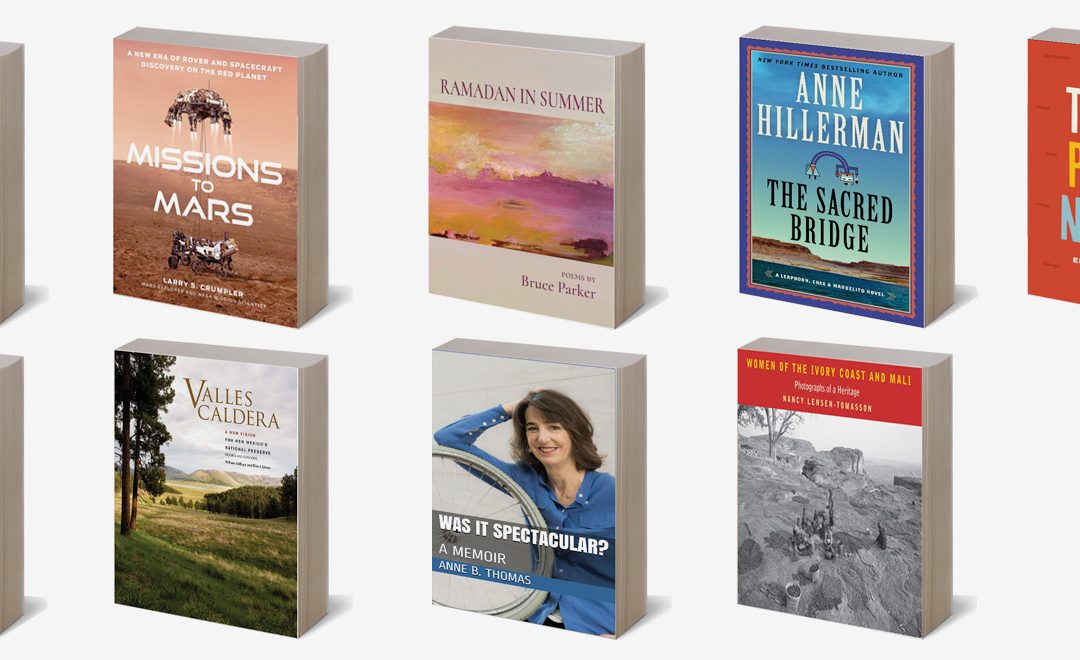
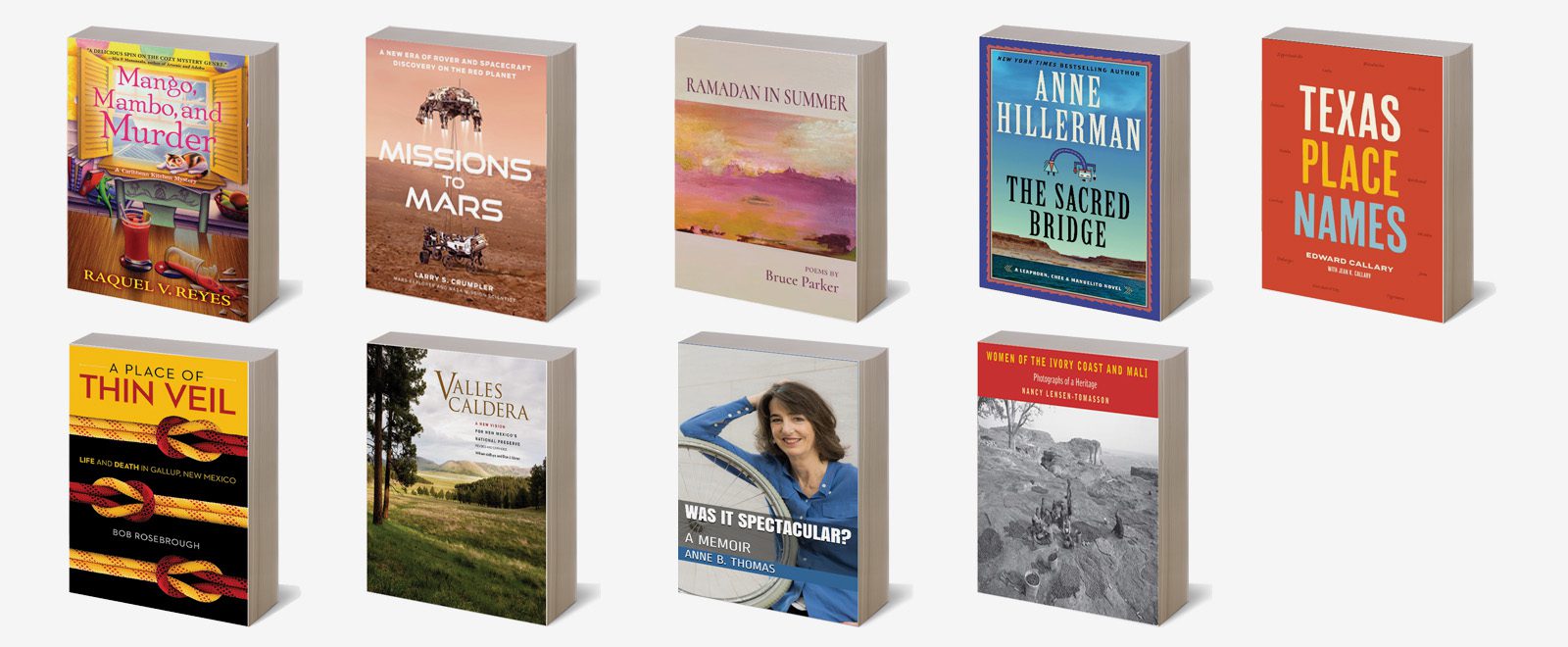
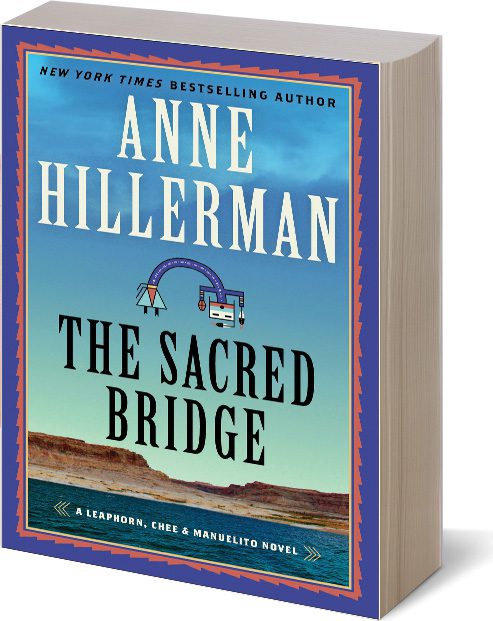
Anne Hillerman (’72 BA), who took up the Chee-Leaphorn mystery series after the death of her father, Tony Hillerman, brings the series into the serpentine coves of Lake Powell and the modern challenges of the COVID-19 pandemic and the marijuana industry in The Sacred Bridge (Harper, 2022). Lt. Leaphorn is still retired and suddenly acting frisky; Jim Chee is second in command at the Shiprock District of the Navajo Nation Police and wondering if it’s time for a change; and Bernadette Manuelito, his wife, is contemplating becoming a detective. The Sacred Bridge has everything a fan of the series could want: parallel plot lines with danger galore, side trips into Diné history and culture; and the deepening relationship between Chee and Manuelito. Yes, it’s a page turner, but it also offers the frequent surprise of perfect little sentences like this: “Driving another man’s truck felt odd, like wearing another person’s shoes.”
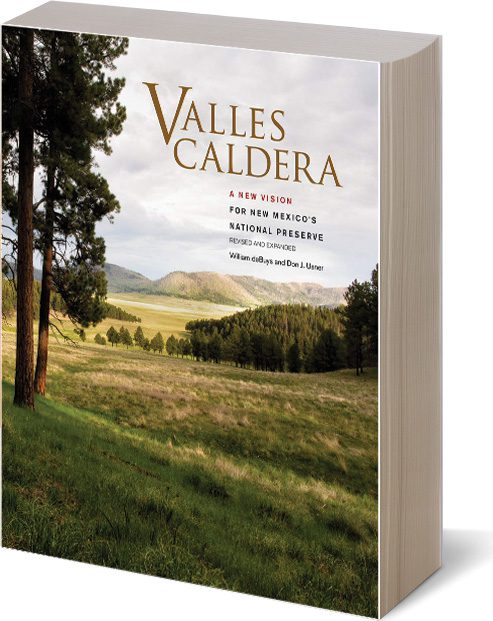
Don J. Usner (’91 MA) has been carrying on a love affair with the Valles Caldera in northern New Mexico for years. Usner, a photographer, brings his cameras to the special place every chance he gets and has documented the landscape through the years, seasons and change in land ownership. With author William deBuys, Usner published Valles Caldera (Museum of New Mexico Press) in 2006. Since then, the nearly 90,000-acre former ranch has become a part of the National Park Service and named Valles Caldera National Preserve. With a new preface, this revised and expanded edition is filled with photographs of the stunning 13-mile wide bowl created by a volcanic eruption more than a million years ago. The reverence Usner and deBuys hold for the land is imbued in the more than 200 pages of this large format book.

Edward Callary (’68 MA) is a professor emeritus at Northern Illinois University and Jean K. Callary is a writer and editor. The couple live in Austin, Texas, and have an apparent affinity for and take an obvious delight in the place names that dot the Lone Star State. In Texas Place Names (University of Texas Press, 2020) they divide the massive state into towns and counties, of which there are thousands, and list them alphabetically. There are 66 entries beginning with LA alone, including Lazbuddie (named after founding merchants Luther “Laz” Green and Andrew “Buddie” Sherley), which you might have driven through on your way East out of Clovis. It sits not far from Muleshoe, named — you guessed it — after a mule shoe a rancher found in early 1900 when he was considering names for his ranch. In these entertaining and informative (nearly 400) pages you can divine the origins of Ding Dong, Telephone and Bug Tussel as well as Grit, Uncertain, Frognot, Dimple and Dime Box.
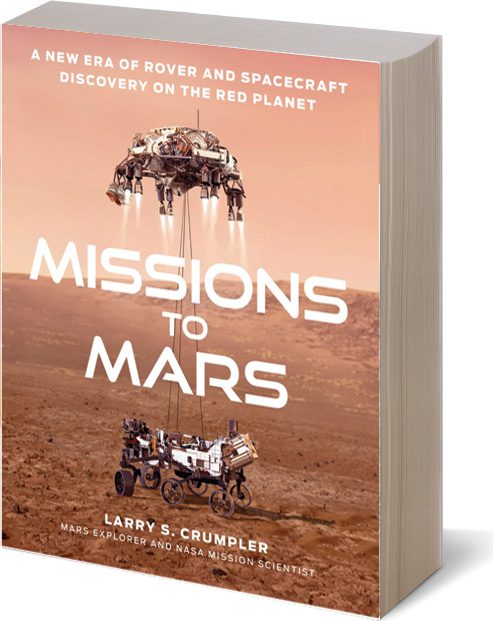
The name Larry S. Crumpler (’97 MS) is well known to anyone with an interest in Mars. The planetary geologist – research curator of Volcanology and Space Science at The New Mexico Museum of Natural History, as well as member of the NASA Mars Perseverance Rover mission team — is so connected to Mars that one geographical location on the red planet has been unofficially named Larry’s Lookout. So who else to write a hefty 300-plus page tome on the exploration of Mars? Missions to Mars (Harper Design, 2021) is chock full of maps and color photos and narrated as only Crumpler could, with intimate knowledge of the Opportunity, Spirit and Perseverance rover missions. “Mission to Mars” also serves as a professional autobiography of Crumpler, who began his life in the space age peering at the sky through a telescope in his backyard and honed his interest in space while he was a graduate student in UNM’s Department of Geology. Crumpler takes through the story of Mars exploration from his first job in 1976 helping to choose the landing site of the Viking 2 Lander to his place on the Perseverance mission in 2020.
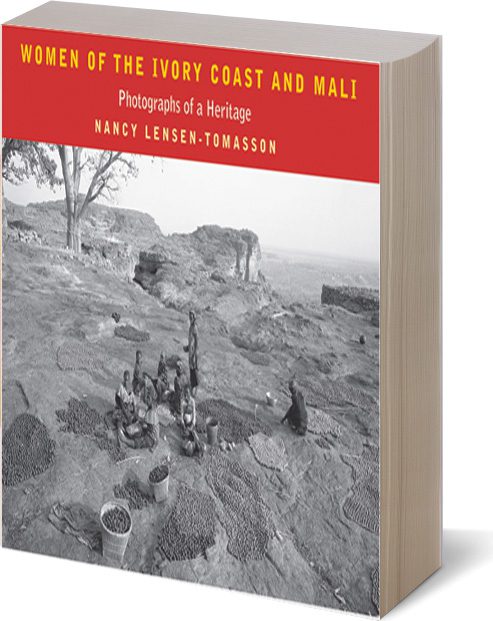
Nancy Lensen-Tomasson (’73 MA, ’78 MFA) was an associate professor of photography at Virginia Commonwealth University from 1979 to 1996. In 1989 she joined a group from the Parsons School of Design for five weeks of study in the Ivory Coast in West Africa. Her aim was to photograph women in their daily lives as she puts it, “revealing their communal, creative and spiritual contributions to their cultures.” In 1992, she joined a group from the Museum of African Art in New York for a stint in Mali, focusing on the cultures of the Bama, Bozo, Fulani and Gogan people. A lot has changed in Ivory Coast and Mali since then. Ivory Coast underwent civil war and Mali has undergone numerous military coups. Women cooking, dancing, tending yam fields, planting millet, weaving grass mats and firing pots fill the pages of Women of the Ivory Coast and Mali: Photographs of a Heritage (2021). In a foreword, Steve Yates, the founding curator of photography at the Museum of New Mexico, notes that the dozens of photographs collected in this book “stand as unique testimony now.”
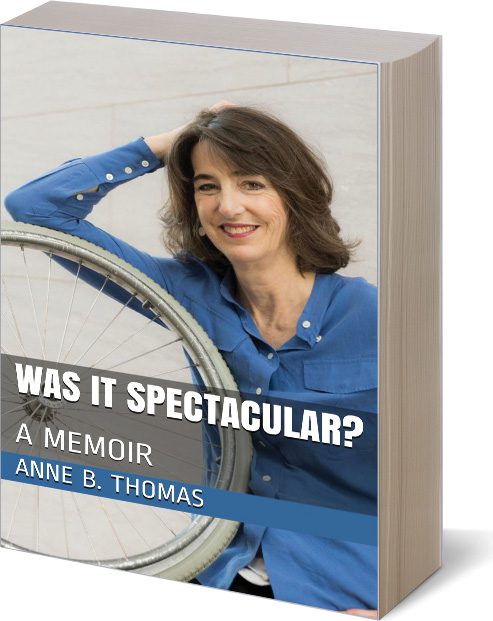
Anne B. Thomas (’80 BUS, ’83 JD) is 18 and just out of a long painful rehab for a broken spinal cord. Once again, she is in a doctor’s office for a complication from her injury, this time a urinary tract infection. The doctor looks at her file and says, “I think you need to seriously consider checking yourself into a nursing home.” It will prevent her from becoming a lifelong burden to her family, he says. Thomas is devastated and forms a steely resolve to prove him wrong. Paralyzed in a car accident in Spain in 1976, Thomas enrolls at UNM at 20 and begins to live an independent life that will take her to Washington, D.C., to work for the Equal Opportunity Commission and the World Bank. In Was it Spectacular? (Allison M. Yabroff, 2020), Thomas, who died in 2019, recounts her struggles and triumphs. In 1990, she returned to UNM and served as director of the Office of Equal Opportunity. “Ever since the accident,” Thomas writes, “I’ve listened to that voice inside me that guides me, urges me on, encourages me to try. There is no regret. The accident forged me, toughened me, drove me to achieve, to prove my worth. It’s been a good ride.” Proceeds of the book go to the Anne B. Thomas No Bounds Scholarship at the UNM Foundation.
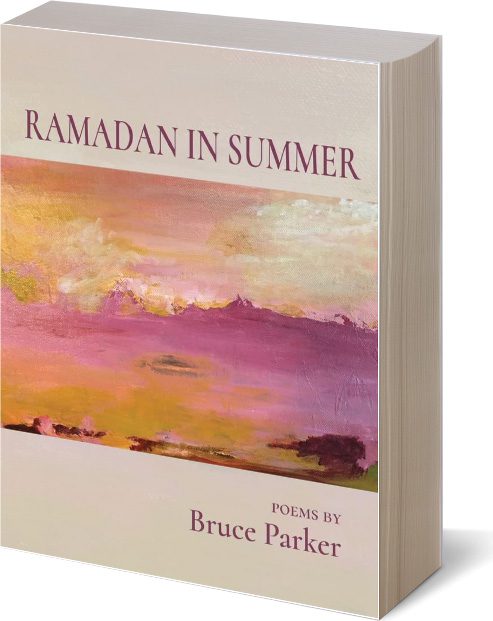
Bruce Parker (’81 MA) has collected two dozen poems in Ramadan in Summer (Finishing Line Press, 2022). Parker, worked abroad with the State Department, and his title poem explores the push and pull of fasting during Ramadan in Islamabad where he worked. In other poems, he explores the transitions and impermanence of life. “A Blameless Life” is short and elegant: “I sit/and nap/ in the hot sun, /still until/ my dream dries up, then/ go inside. Indoors I wake,/dodge the smother of sleep,/put it off./Call me into the shade,/mine a blameless/ life when my acts/are forgotten, this age/not held against me.”
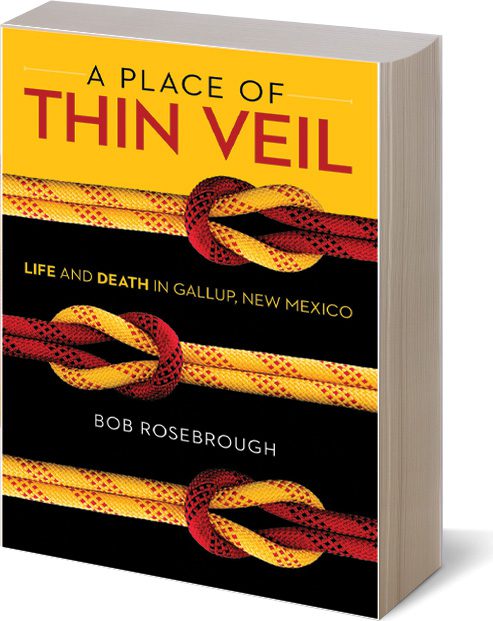
Bob Rosebrough (’75 BA, ’78 JD) describes his adopted hometown of Gallup, N.M., as simultaneously wonderful and terrible. Raised in Farmington, another border town, but more segregated between whites and Navajos, Rosebrough strikes out for Gallup after he graduates from law school, eager to make his way in an entirely different milieu. In A Place of Thin Veil (Rio Nuevo Publishers, 2022), which is as much Gallup’s memoir as Rosebrough’s, the lawyer who will become mayor recounts the western outpost’s history, demography and geography as he writes about his own life’s path. Key to Rosebrough’s understanding of Gallup are some seminal events: in 1973 when Larry Casuse, a Navajo UNM student, kidnapped Gallup’s mayor hostage at gunpoint in City Hall and then was shot to death; in the 1980s when Gallup’s problems with alcohol gain nationwide attention; and during Rosebrough’s terms as mayor as he works for alcohol reform. “I find myself thinking that while some of the terrible side of Gallup is obvious to most,” Rosebrough writes, “the wonderful side is equally real, even though it’s less apparent to the outsiders.”
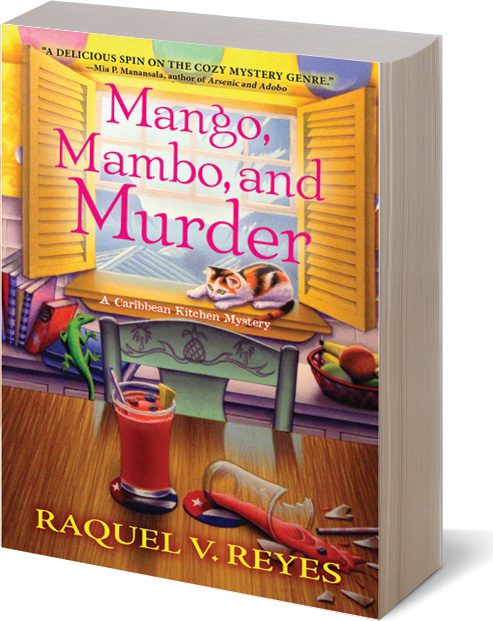
Miriam Quinones Smith, a dissertation away from a PhD in anthropology from New York University, is adrift in Miami, the hometown of her husband. Staying home with her toddler and trying to assimilate into the Miami social scene, she is drawn into intrigue when a country club luncheon ends with a tablemate dead, face-down in her banquet chicken salad. Mango, Mamba, and Murder (Crooked Lane, 2021), the first outing of Raquel V. Reyes (’92 BAFA) moves quickly and brightly, with Spanish sprinkled generously and warm repartee between Quinones Smith and her best friend from childhood, Alma Diaz, a fellow Cubana. When Alma gets arrested for the socialite’s death, the mystery swings into stride.
We would like to add your book to the alumni library in Hodgin Hall and consider it for a review in Shelf Life.
Please send an autographed copy to:
Shelf Life, UNM Alumni Relations
1 UNM, MSC01-1160, Albuquerque, NM 87131
News, notes and updates from UNM Alumni...
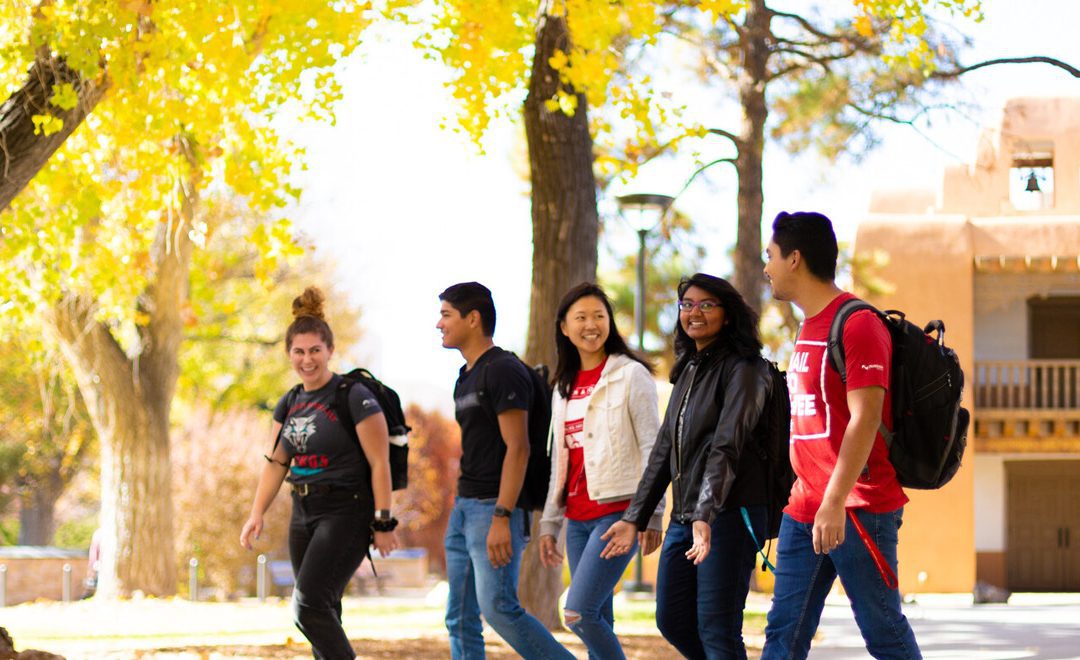
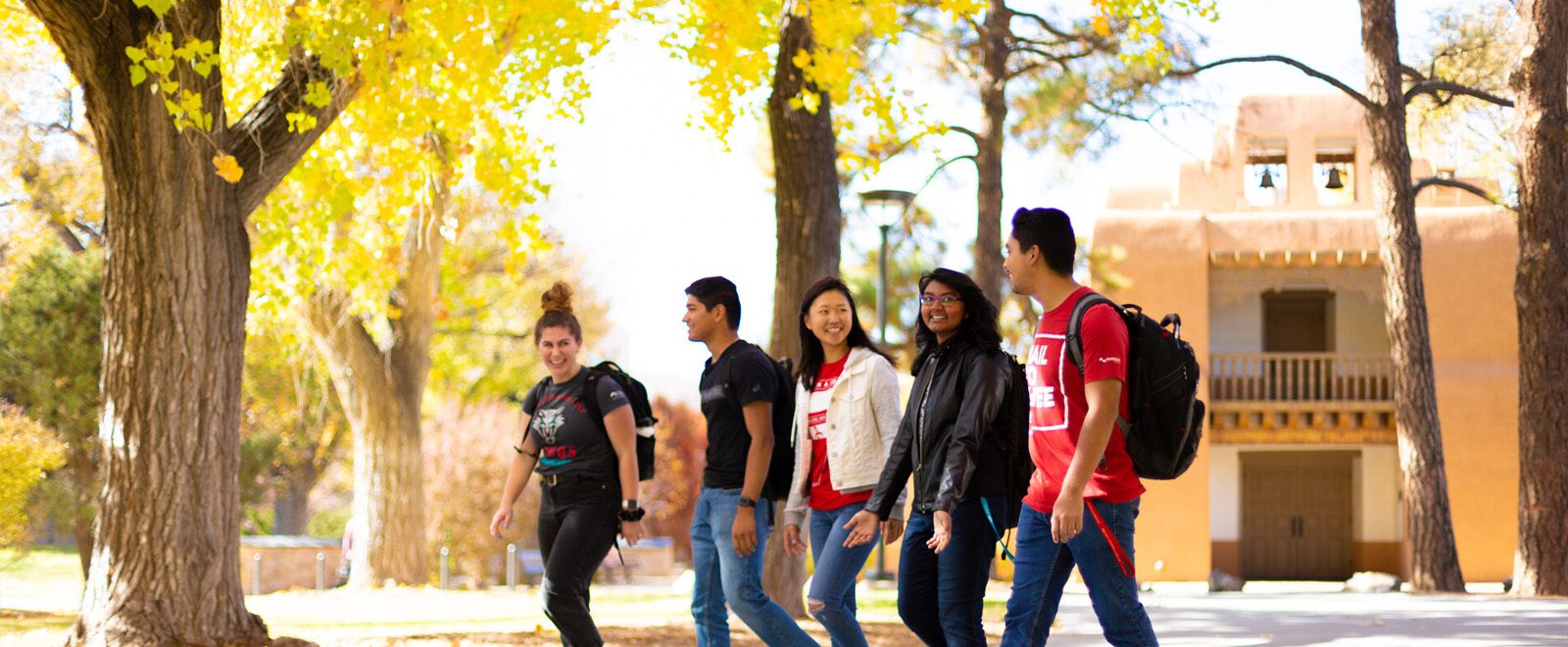
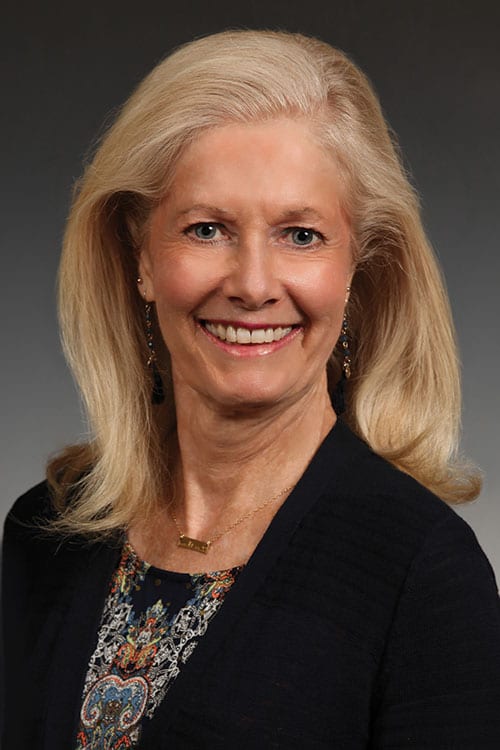
When we describe the Alumni Association, we think of words like network, connection, sharing, support, enrichment and discovery. These words capture what we’re trying to accomplish with you and for you at the UNM Alumni Association. When you graduated as a Lobo, you became a Lobo for Life — an automatic member of our alumni association. And now we want to ensure you have the opportunities you want, whether it’s simply to be informed or to be actively engaged.
For those wanting to keep updated on the programs and work of the Association, there are two best places. One is The Howler, which is emailed to you on the first Thursday of each month. The second is our website, with up-to-date information on events, activities and opportunities to engage.
And of course, we know every Lobo looks forward to the Mirage magazine filled with interesting stories about our alums around the country. Our alums are doing amazing things in their jobs and communities. The interesting developments since their graduation are fascinating to discover and bring to you.
And now our biggest focus for this year is to get you involved in what we’re doing. We want you to participate, whether it’s attending an event — in person or virtually — or it’s joining a regional or affiliate chapter, a committee, or considering nominating yourself for a board member position. You could take advantage of our Lobo Career Network, which provides support to alums at every stage of their career. We’re also putting together the Alumni Business Directory to acknowledge and promote our alum-owned businesses. These opportunities and more are outlined on our website or you can reach out to us to find out more.
An here’s a reminder of an easy way to help the Alumni Association: When it comes time to renew your vehicle registration, order a UNM prestige plate. It’s a great way to support your alumni association activities.
I’d like to conclude with a special congratulations to our Alumni Emeriti. We enjoyed hosting the classes of ’70, ’71 and ’72 this past May at Hodgin Hall for a reception, breakfast with President Stokes, a tour of campus and concluding with the Commencement ceremony and special recognition of our alums. See our photo section for more.
To all of you Lobo for Lifers, we appreciate your support and engagement with UNM and the UNM Alumni Association. Go Lobos!
Connie Beimer
Vice President for Alumni Relations, UNM
Executive Director, UNM Alumni Association
With the arrival of autumn comes the smell of roasting chile, the sight of hot air balloons on the horizon...


Taking a novel approach to understanding climate change, Paul Hooper, adjunct associate professor of Anthropology, dived into existing data sets that contain historical information about societies, including measures of complexity in language, government and economies. He reanalyzed that information to look at how societies fared during cooling periods.
“I found that societies were substantially less complex during the coldest centuries of these climate events. For societies in northern regions, cooling was associated with a loss of about 300 years of accumulated social complexity,” Hooper said. “The research shows that the success of civilizations depends on favorable climatic conditions.”
While Hooper focuses on cooling, not warming, his analysis published in Cliodynamics: The Journal of Quantitative History and Cultural Evolution illuminates yet another potential disruption of changing climate.
“Societies based on agriculture, like our own, are productive within a surprisingly narrow range of climatic conditions,” Hooper said. “Too cold, too hot, or too little water, and productivity suffers. Complex societies have never faced the climate conditions that are now on the horizon, and they’re going to be a shock to our social and economic systems. In addition to higher temperature, precipitation will also be key. While some areas will dry up, others will receive more water due to higher rates of evaporation from the oceans.”
UNM archaeologist and Prof. Keith Prufer co-led a team excavating a site in Belize...
Recent Comments